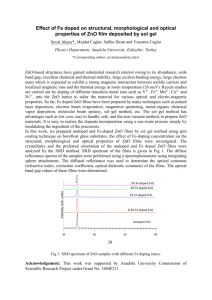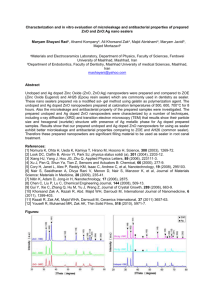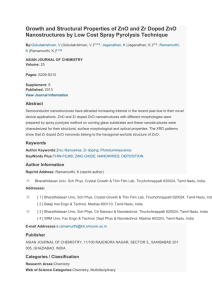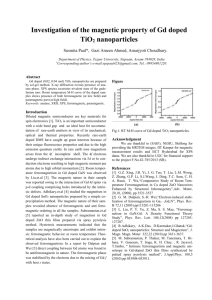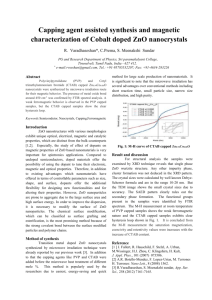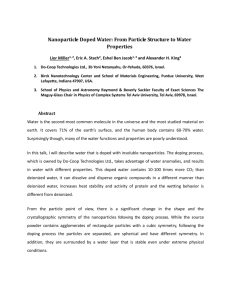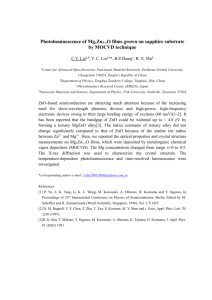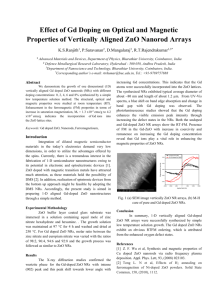View
advertisement
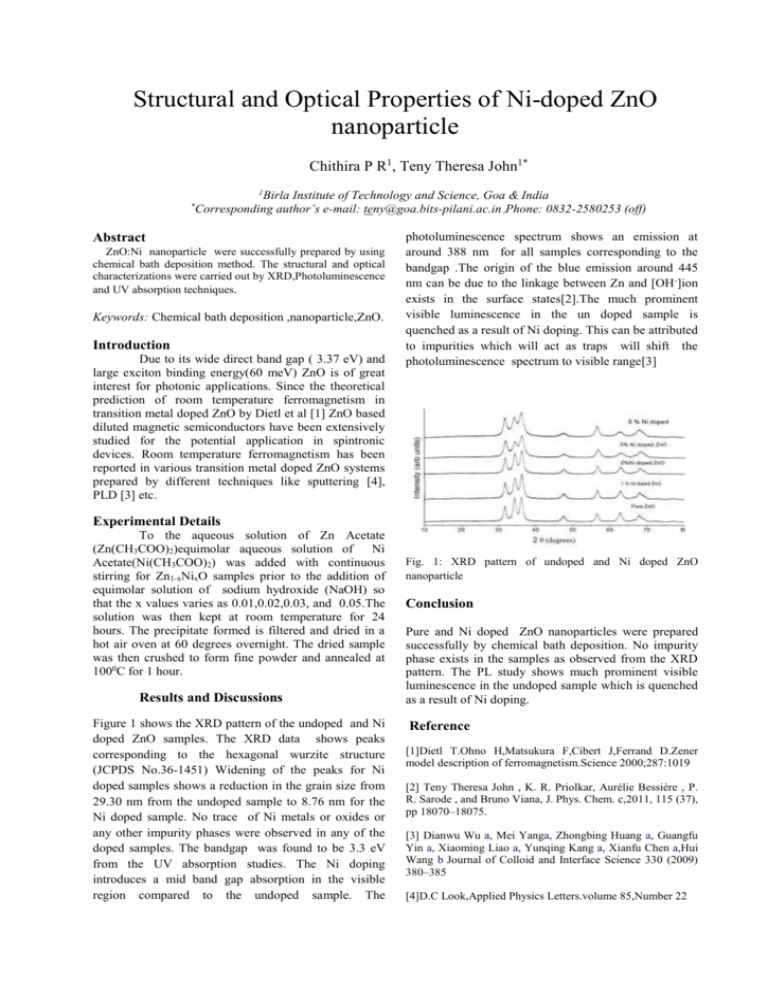
Structural and Optical Properties of Ni-doped ZnO nanoparticle Chithira P R1, Teny Theresa John1* 1 Birla Institute of Technology and Science, Goa & India Corresponding author’s e-mail: teny@goa.bits-pilani.ac.in ,Phone: 0832-2580253 (off) * Abstract ZnO:Ni nanoparticle were successfully prepared by using chemical bath deposition method. The structural and optical characterizations were carried out by XRD,Photoluminescence and UV absorption techniques. Keywords: Chemical bath deposition ,nanoparticle,ZnO. Introduction Due to its wide direct band gap ( 3.37 eV) and large exciton binding energy(60 meV) ZnO is of great interest for photonic applications. Since the theoretical prediction of room temperature ferromagnetism in transition metal doped ZnO by Dietl et al [1] ZnO based diluted magnetic semiconductors have been extensively studied for the potential application in spintronic devices. Room temperature ferromagnetism has been reported in various transition metal doped ZnO systems prepared by different techniques like sputtering [4], PLD [3] etc. photoluminescence spectrum shows an emission at around 388 nm for all samples corresponding to the bandgap .The origin of the blue emission around 445 nm can be due to the linkage between Zn and [OH-]ion exists in the surface states[2].The much prominent visible luminescence in the un doped sample is quenched as a result of Ni doping. This can be attributed to impurities which will act as traps will shift the photoluminescence spectrum to visible range[3] Experimental Details To the aqueous solution of Zn Acetate (Zn(CH3COO)2)equimolar aqueous solution of Ni Acetate(Ni(CH3COO)2) was added with continuous stirring for Zn1-xNixO samples prior to the addition of equimolar solution of sodium hydroxide (NaOH) so that the x values varies as 0.01,0.02,0.03, and 0.05.The solution was then kept at room temperature for 24 hours. The precipitate formed is filtered and dried in a hot air oven at 60 degrees overnight. The dried sample was then crushed to form fine powder and annealed at 1000C for 1 hour. Results and Discussions Figure 1 shows the XRD pattern of the undoped and Ni doped ZnO samples. The XRD data shows peaks corresponding to the hexagonal wurzite structure (JCPDS No.36-1451) Widening of the peaks for Ni doped samples shows a reduction in the grain size from 29.30 nm from the undoped sample to 8.76 nm for the Ni doped sample. No trace of Ni metals or oxides or any other impurity phases were observed in any of the doped samples. The bandgap was found to be 3.3 eV from the UV absorption studies. The Ni doping introduces a mid band gap absorption in the visible region compared to the undoped sample. The Fig. 1: XRD pattern of undoped and Ni doped ZnO nanoparticle Conclusion Pure and Ni doped ZnO nanoparticles were prepared successfully by chemical bath deposition. No impurity phase exists in the samples as observed from the XRD pattern. The PL study shows much prominent visible luminescence in the undoped sample which is quenched as a result of Ni doping. Reference [1]Dietl T.Ohno H,Matsukura F,Cibert J,Ferrand D.Zener model description of ferromagnetism.Science 2000;287:1019 [2] Teny Theresa John , K. R. Priolkar, Aurélie Bessière , P. R. Sarode , and Bruno Viana, J. Phys. Chem. c,2011, 115 (37), pp 18070–18075. [3] Dianwu Wu a, Mei Yanga, Zhongbing Huang a, Guangfu Yin a, Xiaoming Liao a, Yunqing Kang a, Xianfu Chen a,Hui Wang b Journal of Colloid and Interface Science 330 (2009) 380–385 [4]D.C Look,Applied Physics Letters.volume 85,Number 22

